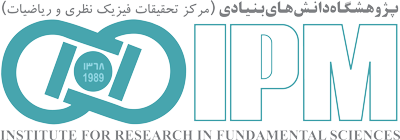“School of Astronomy”
Back to Papers HomeBack to Papers of School of Astronomy
| Paper IPM / Astronomy / 11367 |
|
||||||||||||||
| Abstract: | |||||||||||||||
|
We investigate the assembly of groups and clusters of galaxies using the Millennium dark matter simulation and the associated Millennium gas simulations, and semi-analytic catalogues of galaxies. In particular, in order to find an observable quantity that could be used to identify early-formed groups, we study the development of the difference in magnitude between their brightest galaxies to assess the use of magnitude gaps as possible indicators. We select galaxy groups and clusters at redshift z= 1 with dark matter halo mass M(R200) ⥠1013âhâ1â Mâ, and trace their properties until the present time (z= 0). We consider only the systems with X-ray luminosity LX,bol⥠0.25 à 1042âhâ2âergâsâ1 at redshift z= 0. While it is true that a large magnitude gap between the two brightest galaxies of a particular group often indicates that a large fraction of its mass was assembled at an early epoch, it is not a necessary condition. More than 90âper cent of fossil groups defined on the basis of their magnitude gaps (at any epoch between 0 < z < 1) cease to be fossils within 4 Gyr, mostly because other massive galaxies are assembled within their cores, even though most of the mass in their haloes might have been assembled at early times. We show that compared to the conventional definition of fossil galaxy groups based on the magnitude gap Îm12⥠2 (in the R-band, within 0.5 âR200 of the centre of the group), an alternative criterion Îm14⥠2.5 (within the same radius) finds 50âper cent more early-formed systems, and those that on average retain their fossil phase longer. However, the conventional criterion performs marginally better at finding early-formed groups at the high-mass end of groups. Nevertheless, both criteria fail to identify a majority of the early-formed systems.
Download TeX format |
|||||||||||||||
| back to top | |||||||||||||||



















